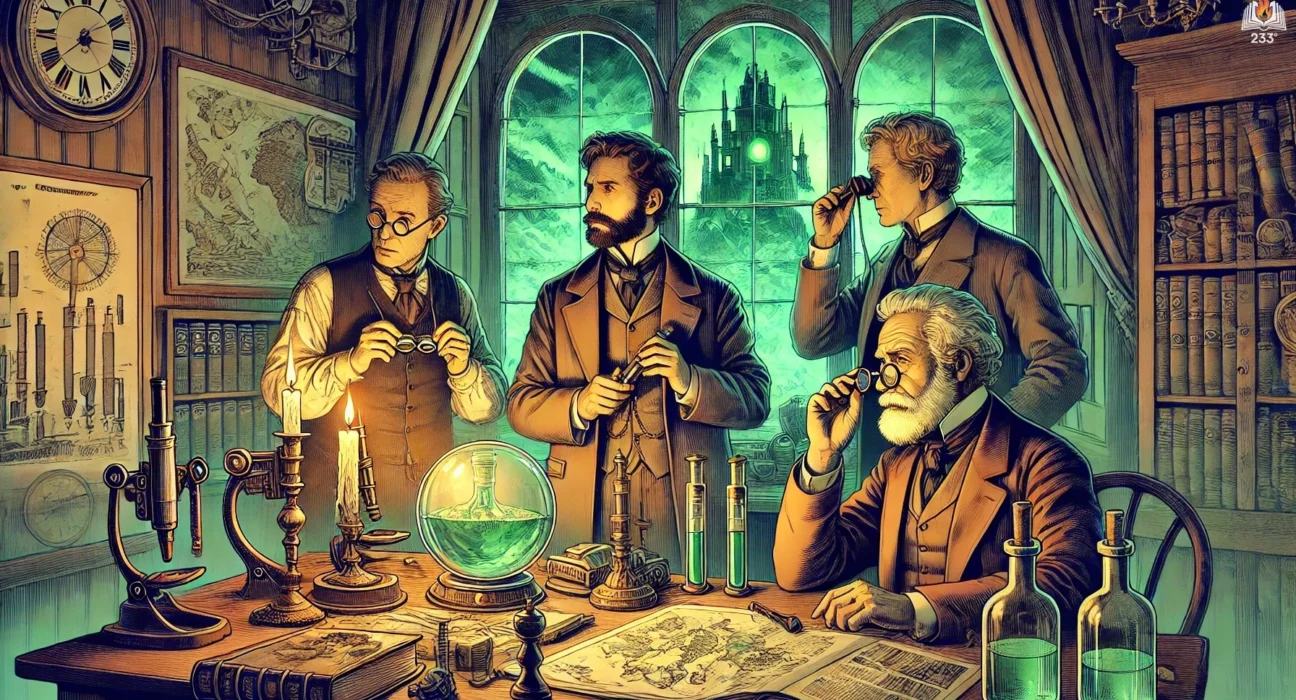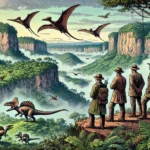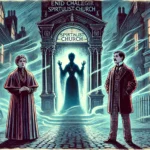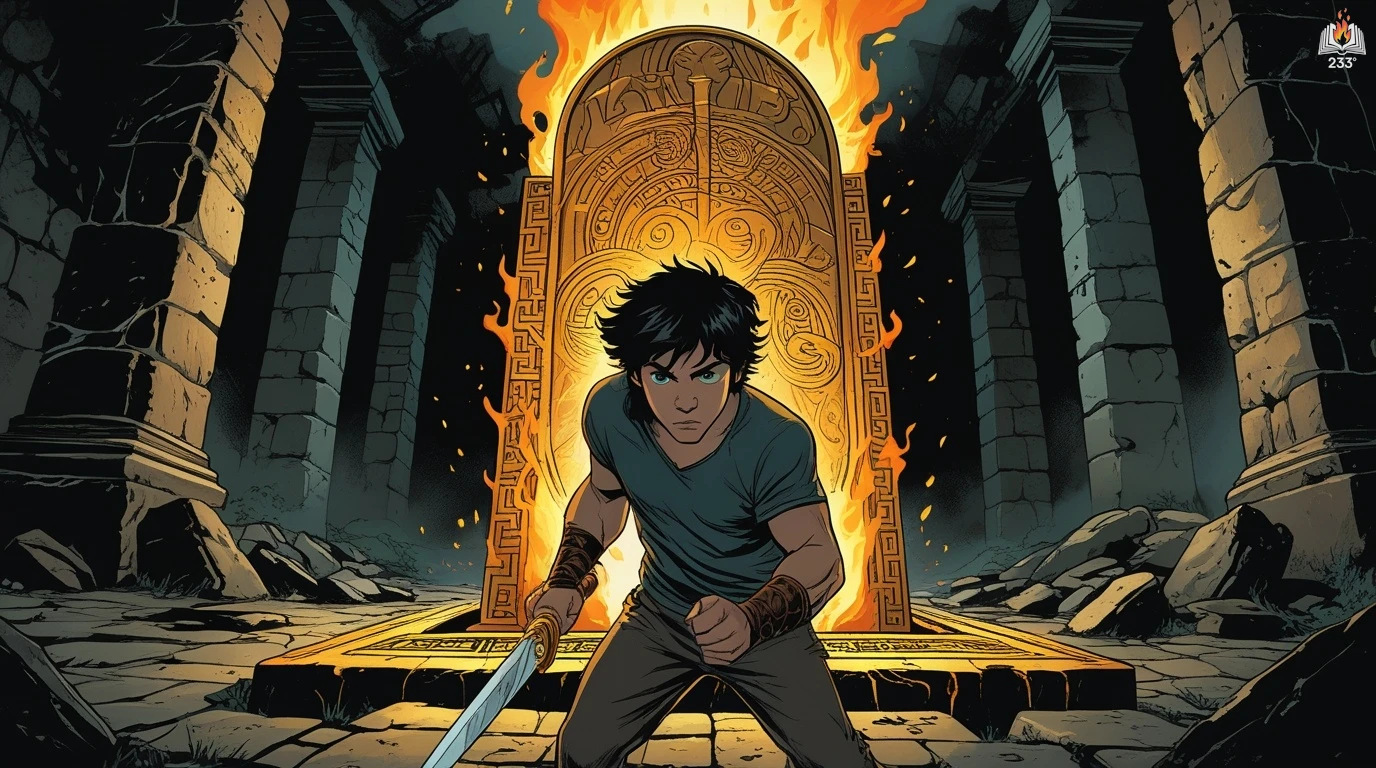“The Poison Belt” is a science fiction novel by Sir Arthur Conan Doyle, first published in 1913. It is a sequel to “The Lost World” and reunites the characters of Professor Challenger, Professor Summerlee, Lord John Roxton, and the narrator, Edward Malone. The story revolves around an apocalyptic event caused by a cosmic poison that threatens the entire planet, showcasing Conan Doyle’s talent for blending scientific concepts with thrilling narrative.
Plot Summary
Professor George Edward Challenger, the formidable scientist known for his audacious theories, sends a mysterious and urgent telegram to his friends, requesting them to join him at his country home. The telegram simply reads: “Bring oxygen.” Edward Malone, the ever-curious journalist, Lord John Roxton, the brave adventurer, and Professor Summerlee, the skeptical scientist, are summoned. With no idea of what to expect, they gather the oxygen cylinders as instructed, puzzling over what challenge could possibly require such an unusual preparation.
Upon arriving at Challenger’s residence, they are greeted with the foreboding sign on the gate: “Visitors, Pressmen, and Mendicants are not encouraged.” Inside, the atmosphere is tense. Challenger, with his usual air of superiority and urgency, leads them to his study, where he reveals a dire cosmic event he has predicted. He explains that Earth is about to pass through a region of poisonous ether in space, a cosmic belt that could potentially lead to the extinction of all life. The scientific community had dismissed Challenger’s earlier warnings, but now the signs are unmistakable. The shift in the spectral lines of stars and planets, indicating a change in the ether, confirms his worst fears.
As they discuss the situation, the initial disbelief among the group fades into an uneasy acceptance of the grim reality. Challenger, ever the scientist, insists on observing the phenomenon closely and understanding it as it unfolds. The Professor has taken precautions, sealing his house and preparing the oxygen cylinders as a possible lifeline to extend their survival. The group gathers in a room that has been made as airtight as possible, with plants placed strategically to absorb carbon dioxide and release oxygen.
From the window, they witness the world outside continue in oblivious normalcy. Golfers play on the links, carriages move along the roads, and children play in the fields, all unaware of the impending doom. Challenger’s telephone rings intermittently, bringing news of global chaos. Reports from Egypt, Spain, and other regions indicate that the deadly ether has already begun to take its toll. Societies crumble in the grip of mass hysteria, and the certainty of death looms ever closer.
As the poison belt engulfs the planet, its effects become apparent. People and animals alike fall into a deep stupor, some becoming hysterical before sinking into unconsciousness. The world enters a state of eerie silence as life comes to a halt. Within Challenger’s house, the group feels the gradual onset of symptoms. They experience a strange mental clarity, a peculiar euphoria that overtakes them. It is as if the cosmic poison is heightening their senses even as it drains the life from them.
Challenger, true to his nature, remains calm and analytical, guiding his companions through their final hours with a blend of scientific detachment and human empathy. His wife, who has been with them throughout this ordeal, faces the situation with remarkable fortitude, taking comfort in her husband’s strength. The group engages in philosophical discussions, reflecting on life, death, and the universe’s vast indifference to human existence. Challenger speaks of the event as a cosmic cleansing, a means by which nature may be resetting the stage for new forms of life.
The oxygen cylinders provide some respite, allowing the group to remain conscious while the world outside sinks into oblivion. They take turns inhaling the life-sustaining gas, extending their vigil by a few precious hours. As the poison’s grip tightens, the world outside their window falls into a profound stillness. Birds drop from the sky, and the landscape is marked by an unnatural quiet, the silence of a world on the brink of annihilation.
In their isolated sanctuary, the four men and Challenger’s wife confront their fate. Challenger, despite his efforts to maintain an air of control, shows moments of vulnerability. He speaks of the universe as an unknowable entity, beyond the grasp of even the greatest minds. Summerlee, the skeptic, now humbled, expresses a newfound respect for Challenger’s foresight. Roxton, the adventurer, remains stoic, facing the end with the same courage that marked his earlier exploits. Malone, the observer, chronicles these final moments with a mixture of awe and melancholy, capturing the essence of human spirit in the face of inevitable death.
Hours pass, and the air in the room grows thin. The effects of the poison intensify, and each breath becomes a struggle. Their conversations wane as they drift into a contemplative silence, each lost in personal reflection. Challenger, ever the scientist, tries to find solace in the thought that they are witnessing a grand cosmic event, an experience few could comprehend.
Just when all hope seems lost, a surprising change occurs. The air around them seems to lighten, and they begin to feel a resurgence of energy. Challenger, with his indomitable will, is the first to notice. He checks the oxygen cylinders and realizes they have not been using them for some time. The group had passed through the worst, and now, inexplicably, they are recovering. The poison belt is receding, and the Earth’s atmosphere is returning to normal.
As they step outside, they find a world slowly waking from its induced slumber. People are stirring, animals are coming to life, and the sky has a clearer, more vibrant hue. They have survived an unimaginable ordeal, one that will forever remain etched in their minds. Challenger, always ready to seek explanations, ponders the event’s significance. The experience has altered them all, leaving them with a deepened sense of life’s fragility and the unfathomable mysteries of the universe.
In the aftermath, the world begins to recover. Challenger and his companions are left to reflect on their survival and the strange providence that spared them. Life resumes, but the shadow of the cosmic event lingers in their thoughts. They are forever changed, their minds expanded by the knowledge that they have faced the end of the world and witnessed the universe’s terrifying indifference.
Main Characters
Professor George Edward Challenger: A brilliant but eccentric scientist known for his authoritative presence and controversial theories. His character is a blend of intellect and arrogance, making him the driving force behind the story’s scientific exploration. In this narrative, he hypothesizes the existence of a cosmic poison threatening Earth.
Professor Summerlee: Challenger’s skeptic colleague, known for his critical approach to new theories. He often clashes with Challenger but eventually concedes to the unfolding evidence. His journey in the novel reflects the scientific community’s initial disbelief and subsequent acceptance of the crisis.
Lord John Roxton: An adventurous and brave explorer, Roxton brings a practical, action-oriented perspective to the group. His experiences in South America have prepared him for the unexpected, and he faces the cosmic threat with courage and composure.
Edward Malone: The narrator and a journalist, Malone provides a grounded viewpoint on the events. His observations and emotional responses give the reader insight into the human aspect of the global catastrophe.
Theme
The Fragility of Human Life: The novel delves into the vulnerability of human existence when faced with an uncontrollable cosmic event. It raises questions about the transient nature of life and humanity’s insignificance in the grand scheme of the universe.
Scientific Inquiry and Skepticism: Through the characters of Challenger and Summerlee, the novel explores the balance between scientific curiosity and skepticism. It examines how science can both reveal and be baffled by the mysteries of the universe.
Isolation and Survival: The story places its characters in a situation where they must confront their isolation and the prospect of being the last survivors. It reflects on the human instinct for survival and the psychological impact of facing the end of the world.
The Unknown and Cosmic Horror: Conan Doyle introduces a sense of cosmic horror by depicting an unseen, incomprehensible force that could annihilate humanity without warning. This theme highlights the limits of human knowledge and the terrifying possibilities that lie beyond.
Writing Style and Tone
Arthur Conan Doyle’s writing in “The Poison Belt” is characterized by its blend of scientific detail and suspenseful storytelling. He uses a formal and descriptive style, particularly through the narrative voice of Malone, to convey a sense of credibility and immersion in the unfolding events. Doyle’s background in medicine and interest in scientific developments are evident in his meticulous depiction of the scientific aspects of the plot, lending the story an air of authenticity.
The tone of the novel oscillates between calm scientific observation and mounting tension as the reality of the cosmic threat becomes apparent. Doyle maintains a sense of foreboding throughout, gradually building suspense until the climax. Despite the gravity of the situation, there are moments of levity and philosophical reflection, which add depth to the narrative and offer a nuanced exploration of human reactions to an existential crisis.
We hope this summary has sparked your interest and would appreciate you following Celsius 233 on social media:
There’s a treasure trove of other fascinating book summaries waiting for you. Check out our collection of stories that inspire, thrill, and provoke thought, just like this one by checking out the Book Shelf or the Library
Remember, while our summaries capture the essence, they can never replace the full experience of reading the book. If this summary intrigued you, consider diving into the complete story – buy the book and immerse yourself in the author’s original work.
If you want to request a book summary, click here.
When Saurabh is not working/watching football/reading books/traveling, you can reach him via Twitter/X, LinkedIn, or Threads
Restart reading!








